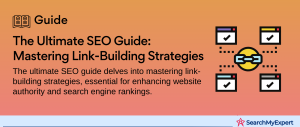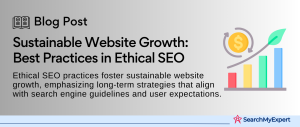SEO in E-commerce Websites
Understanding SEO and Its Crucial Role in E-Commerce
Search Engine Optimization (SEO) is a powerhouse in the digital world, especially for e-commerce sites. It’s the art and science of enhancing your website to improve its visibility when people search for products or services related to your business on search engines like Google. The goal? To boost organic (non-paid) search engine results, enhancing both the quality and quantity of website traffic.
Why SEO Matters for Online Businesses
In the bustling online marketplace, being visible is everything. SEO is the beacon that guides potential customers to your website. It’s more than just improving search rankings; it’s about enhancing user experience and building credibility. A well-optimized e-commerce site attracts more visitors, which can lead to increased sales and customer loyalty.
The Showdown: Paid Traffic vs. Organic Traffic
- Paid Traffic:
This is like a fast-track ticket, where businesses pay for advertising to get their site at the top of search engine results. It’s immediate but stops the moment you stop paying. - Organic Traffic:
Earned through SEO, this traffic is like planting a garden. It takes time and care but yields long-term results. It’s about earning your spot in search results through quality content and a well-optimized site.
SEO isn’t just a marketing strategy; it’s a fundamental component of modern online businesses, particularly in e-commerce. Its impact is profound, offering sustainability and growth in the highly competitive digital marketplace.
Keyword Research and Targeting in E-Commerce SEO
Unearthing the Right Keywords: The Cornerstone of SEO
Keyword research is the compass for your SEO journey. It involves identifying the terms and phrases your potential customers use when searching for products or services like yours. The right keywords can bridge the gap between your content and your audience’s needs.
Tools and Strategies for Effective Keyword Research
- User Intent:
Understanding the ‘why’ behind searches is critical. Is the user looking to buy, to learn, or to locate a physical store? - Search Volume Analysis:
Utilize tools like Google Keyword Planner, SEMrush, or Ahrefs to identify how often certain terms are searched. - Competitor Analysis: Look at what keywords your competitors rank for. Tools like Moz and SpyFu can offer insights into their strategies.
Crafting a Comprehensive Keyword List
- Long-Tail Keywords: These are longer, more specific phrases that are less competitive but highly targeted. They often result in higher conversion rates.
- Balancing Act: Your keyword strategy should be a mix of high-volume, competitive keywords and niche, specific long-tail keywords.
Effective keyword research is a blend of science and art. It’s about understanding market trends, user psychology, and the competitive landscape. By targeting the right keywords, e-commerce businesses can align their content with user intent, driving both traffic and sales.
On-Page Optimization for E-Commerce Websites
Elevating Product Titles, Descriptions, and Tags
Crafting Compelling Titles and Descriptions: Each product title and description should not only be informative but also engaging and SEO-friendly. This means incorporating relevant keywords without sacrificing readability.
- Meta Magic:
Meta tags, especially title tags and meta descriptions, act as your storefront’s signboard on the search engine results page (SERP). They should be crisp, engaging, and keyword-rich. - Image Alt Text: Often overlooked, alt text for images enhances SEO and accessibility, describing what’s on the image for search engines and visually impaired users alike.
Weaving Keywords Throughout Your Content
- Organic Integration: Keywords should flow naturally within your content. They should enhance, not disrupt, the user experience. Overstuffing is a big no-no – it’s about quality, not quantity.
User-Friendly Website Structure
- Smooth Navigation:
Your website should be easy to navigate, with a clear hierarchy and logical link structure. This not only aids users but also search engines in understanding your site’s layout. - Mobile-Friendly Design:
With the increasing use of smartphones for online shopping, a mobile-responsive design is crucial. It ensures a positive user experience across all devices.
Technical SEO Optimization for E-Commerce
Addressing Broken Links and Crawl Errors
Repair and Redirect: Broken links can harm your SEO efforts. Regularly check for and fix broken links, and set up proper redirects where necessary.
Enhancing Website Speed and Mobile Responsiveness
- Speed is Key:
A slow-loading website can deter visitors and negatively impact your search rankings. Optimize image sizes, leverage browser caching, and consider a content delivery network (CDN) to boost speed. - Responsive Design:
Ensure that your website adjusts smoothly to different screen sizes and resolutions for an optimal mobile experience.
Sitemap Submission and Robots.txt Optimization
- Sitemap Essentials: A well-structured sitemap helps search engines effectively crawl your website. Submitting your sitemap to search engines like Google can improve the visibility of your pages.
- Robots.txt Tuning:
This file tells search engine bots which pages to crawl and which to ignore. Optimizing it ensures that search engines are focusing on your important pages.
Technical SEO may not be visible to users, but it’s crucial for search engines. It ensures that your site is healthy and can be easily crawled and indexed.
Content Marketing and Backlinks in E-Commerce SEO
Crafting Valuable Content for Your Audience
Engaging and Informative Content: The cornerstone of effective content marketing is creating material that is not only relevant but also provides value to your audience. This could be through blog posts, how-to guides, product reviews, or informative articles.
Building High-Quality Backlinks
- Relevance and Authority:
Backlinks are like votes of confidence from other websites. Focus on obtaining links from reputable, relevant sites. This boosts your site’s credibility and SEO performance. - Guest Posting and Collaborations: Engaging in guest blogging and collaborations with authoritative sites in your niche can be a great way to build backlinks.
Leveraging Social Media
- Amplify Your Reach:
Use social media platforms to promote your content. This doesn’t directly affect SEO rankings but can lead to increased visibility, traffic, and potential backlinks.
Content marketing and building backlinks are about establishing authority and trust, which are key to long-term SEO success.
Performance Monitoring and Analysis in SEO
Tracking Traffic and Keyword Rankings
- Vital Metrics: Regularly monitor your website’s traffic and the performance of your target keywords. Tools like Google Analytics and SEMrush can be invaluable for this.
Data Analysis for Improvement
- Identify Strengths and Weaknesses:
Use data to pinpoint which strategies are working and where you need to improve. Look at metrics like bounce rate, time on site, and conversion rates.
Utilizing SEO Tools for Monitoring and Adjustments
- Stay Informed and Adaptive:
SEO tools offer comprehensive reports and insights, helping you to stay on top of your SEO game. Regularly reviewing and adjusting your strategies based on these insights is key to maintaining and improving your SEO performance.
Performance monitoring and analysis enable you to make informed decisions, adapting your strategies to the ever-changing landscape of SEO.
Ongoing Optimization and Maintenance for E-Commerce SEO
Keeping Your Website Content Fresh
- Regular Updates: Consistently updating website content, including product descriptions and blog posts, is key. This not only keeps your content relevant but also signals to search engines that your site is active and up-to-date.
Staying on Top of SEO Trends and Algorithm Updates
- SEO Landscape:
The SEO world is dynamic, with frequent algorithm updates by search engines. Staying informed about these changes allows you to adapt your strategies accordingly. - Learning and Adapting: Attend webinars, follow industry blogs, and participate in SEO communities to stay ahead of the curve.
Continual Performance Monitoring and Improvement
- Regular Audits: Conduct website audits to identify issues like broken links, slow loading pages, or outdated content.
- Performance Metrics:
Keep track of key performance indicators (KPIs) such as organic traffic, bounce rate, conversion rate, and keyword rankings. Use tools like Google Analytics and Google Search Console for insights.
Ongoing optimization and maintenance are crucial in the evolving landscape of SEO. It’s a continuous process of learning, adapting, and improving to maintain and enhance your website’s search engine visibility and user experience.
Conclusion
In the rapidly evolving digital marketplace, mastering e-commerce SEO is not just beneficial; it’s essential. From understanding the fundamentals of SEO and keyword research to the intricacies of on-page and technical optimization, every step plays a critical role in enhancing your online presence. Content marketing and backlink strategies extend your reach, while ongoing performance analysis ensures that you stay ahead in the game. Regular updates, adapting to SEO trends, and continuous site maintenance are the keys to sustained success. By diligently applying these strategies, businesses can significantly improve their online visibility, drive traffic, and ultimately, boost sales. Remember, SEO is a journey, not a destination. It requires persistence, adaptability, and a keen eye on the ever-changing landscape of digital marketing
Maximize your website’s performance with our SEO Services.
Table of Contents
Toggle






